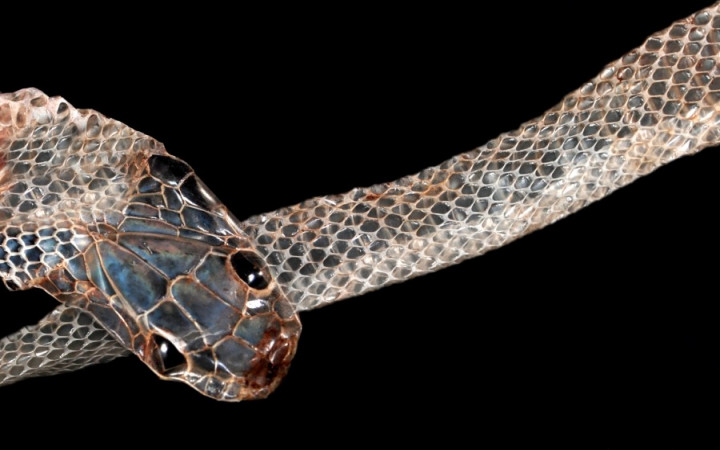It's a beautiful spring day and you and your best friend decide to celebrate by taking an adventurous hike in the woods. As the sunshine streams through the treetops, you walk along the trails, enjoying the smells of the plants and the sounds of the birds in the air.
As you approach a log blocking the trail, you notice something strange at the base of it. It looks almost like a snake…but not quite. What could it be? As you inch closer, you realize that it's a long piece of snake skin!
After you canvas the area to make sure there are no real snakes nearby, you pick up the snake skin and examine it more closely. You can see the impressions of the scales and the designs they make. You start to WONDER…why do snakes shed their skin?
The simple answer is that snakes shed their skin because they are just like all other animals. All animals shed their skin — even you! In mammals, especially humans, this is an ongoing process that's rarely noticed.
Skin shedding in reptiles is different. Instead of an ongoing process, reptiles shed skin periodically. Snakes are even more unique, because their skin usually comes off in one piece. If you've ever seen a snake skin, you know it looks like the snake just slithered right out of its skin, almost like taking off a sock! Scientists call this process ecdysis, although you may also sometimes hear the terms sloughing and molting.
Snakes shed their skin to allow for further growth and to remove parasites that may have attached to their old skin. As a snake grows, its skin becomes stretched. Unlike human skin, a snake's skin doesn't grow as the animal grows. Eventually, a snake's skin reaches a point where further growth is not possible.
When that occurs, a new layer of skin grows underneath the current one. As soon as it is complete, the old skin peels away, leaving behind a snake-shaped shell along with any parasites that may have been attached.
To leave their old skin behind, snakes may go for a swim to allow water to loosen the old skin even further. When they're ready to shed the old layer, they create a rip in the old skin, usually in the mouth or nose area. They often do this by rubbing against a rough, hard object, such as a rock or a log.
Once the old skin layer has been breached, the snake inches its way through the old layer until it's completely removed. If you find a snake skin in the wild, you'll notice that it's usually inside out and in one piece.
Snakes shed their skin quite often. The average snake will shed its skin two to four times per year. This average varies with age and species, however. Young snakes that are actively growing may shed their skin every two weeks. Older snakes might only shed their skin twice each year.




